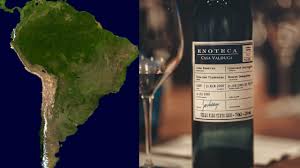
Ni’ihau, Hawaii, often called the “Forbidden Island,” is a privately owned, secluded paradise known for its pristine landscapes, rich Hawaiian culture, and limited access. Located just west of Kauai, Ni’ihau has remained largely untouched by modern development, preserving its natural beauty and traditional way of life. Home to a small Native Hawaiian population, the island continues to uphold the Hawaiian language and customs. With no paved roads, minimal infrastructure, and restricted tourism, Ni’ihau offers an exclusive glimpse into an unspoiled Hawaii, making it one of the most mysterious and fascinating destinations in the world.
1. What Makes Ni’ihau, Hawaii So Unique?
Ni’ihau, Hawaii, also known as the “Forbidden Island,” is the least accessible and most mysterious of the Hawaiian Islands. Privately owned by the Robinson family since 1864, the island has strict access restrictions, making it one of the most exclusive places in the world.
With no paved roads, limited electricity, and no commercial tourism, Ni’ihau offers a glimpse into a simpler, traditional Hawaiian way of life. The island remains home to a small Native Hawaiian population that continues to speak the Hawaiian language and practice cultural traditions.
2. The History Behind the Forbidden Island
In 1864, Scottish plantation owner Elizabeth Sinclair purchased Ni’ihau from King Kamehameha V with the promise of preserving its Native Hawaiian culture. Over 150 years later, her descendants still uphold this commitment, limiting outside influences and protecting the island’s way of life.
During World War II, Ni’ihau played a role in history when a Japanese fighter pilot crash-landed on the island after the attack on Pearl Harbor. This event, known as the “Ni’ihau Incident,” highlighted the island’s isolation and its importance in wartime security.
3. Visiting Ni’ihau: Is It Possible?
Because Ni’ihau is privately owned, access is highly restricted. Only a few select tours, such as helicopter excursions and hunting trips, allow visitors to set foot on the island’s pristine beaches. These limited tours offer a rare opportunity to experience the untouched beauty of Ni’ihau, Hawaii.
For most, the closest view of Ni’ihau is from a boat or an aerial tour. Snorkeling and diving trips to the island’s surrounding reefs provide a unique chance to see its crystal-clear waters and diverse marine life.
4. The People and Culture of Ni’ihau
Ni’ihau is home to around 70 full-time residents who live off the land and sea, maintaining a traditional subsistence lifestyle. The Hawaiian language is still spoken fluently, making Ni’ihau one of the last strongholds of native Hawaiian culture.
The island’s residents are known for their craftsmanship, particularly in creating Ni’ihau shell leis. These intricate necklaces, made from rare shells found only on Ni’ihau’s beaches, are considered some of the most valuable Hawaiian jewelry.
5. The Pristine Natural Beauty of Ni’ihau
With no large-scale development, Ni’ihau remains one of the most unspoiled places in Hawaii. Its beaches are home to native Hawaiian monk seals, while its waters teem with vibrant marine life, including tropical fish and coral reefs.
The island’s remoteness allows for clear, pollution-free skies, making it an excellent location for stargazing. With minimal artificial light, Ni’ihau offers breathtaking views of the Milky Way and celestial wonders.
6. Ni’ihau’s Role in Conservation
The Robinson family, who owns Ni’ihau, actively works to preserve its delicate ecosystem. The island is home to several endangered species, including Hawaiian monk seals and native birds like the pueo (Hawaiian owl).
Strict land management practices help maintain the island’s natural beauty. By limiting outside influences, Ni’ihau has avoided many environmental issues that have affected the other Hawaiian Islands.
7. How Ni’ihau Supports the Hawaiian Language
One of the most remarkable aspects of Ni’ihau, Hawaii, is its commitment to preserving the Hawaiian language. Unlike other parts of Hawaii, where English dominates, Ni’ihau’s residents continue to speak Hawaiian in their daily lives.
This linguistic preservation has made Ni’ihau a valuable cultural resource for those seeking to learn and revive the native Hawaiian language. The island serves as a living example of Hawaii’s rich linguistic heritage.
Conclusion
Ni’ihau, Hawaii, remains an enigmatic and culturally significant part of the Hawaiian Islands. With its rich history, pristine environment, and commitment to tradition, Ni’ihau offers a rare glimpse into a way of life untouched by modern influences. Whether admired from afar or visited through one of its exclusive tours, Ni’ihau’s beauty and mystery continue to captivate those who seek to learn more about Hawaii’s hidden gem.






